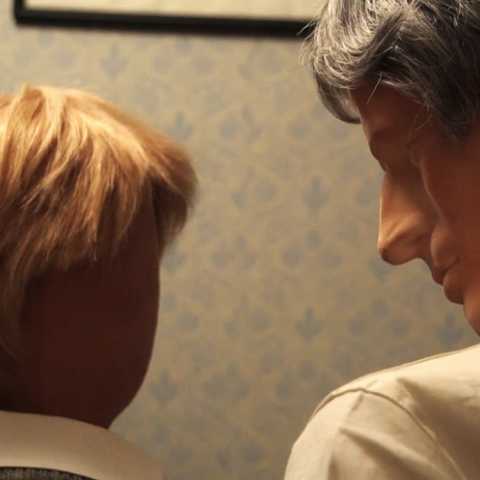ASC Gallery
The Chaplin Centre
Taplow House
Thurlow Street
London
SE17 2DG
United Kingdom



Erica Eyres' work is primarily concerned with narrative, and is realized through series of drawings, videos, and sculptures. Frequently borrowing from the aesthetics of low-budget television, her videos center around narratives based on her own family or people she has known, re-told by exploiting elements of fiction. The stories' biographical fallacy is then furthered by the use of a stand-in narrator, whose presence contributes to a mechanism referred to as 'the estranged voice.â€
This process of estrangement complicates the viewer's understanding of the author's subjective truth and problematizes the notion of the 'autobiographical'. The use of dark humor is also fundamental to her work, as it enables points of entry for otherwise off-putting stories, and subverts the act of storytelling.
For her exhibition at ASC, Eyres will present an installation centred on the video Autobiography (2013).
Autobiography features a male narrator whose performance reveals an unexpected detachment from the story he presents. As the narrative unfolds, it becomes increasingly unclear whether the title refers to the speaker, the artist, or any of the characters depicted. The work is accompanied by Autobiography II, which uses footage from The Museum of Man and Nature in Winnipeg, where Eyres once worked as a Diorama Artist Assistant.
In Autobiography II, tightly framed images of the museum's dioramas assume an ambiguous quality that alludes to a film set or some otherworldly site. The video's narrative follows the course of human evolution, beginning with early forms of under-water life, moving towards dinosaurs, mammals, and eventually humans. At this point, the mannequins devolve to become increasingly abstract. Like the figures described in Autobiography, the mannequins are rendered void of distinguishing features, disabling the viewer from empathizing with their emotions.
The videos will be accompanied by recent drawings, as well a body of ceramic wigs, balloons and gloves that are rendered flat, as though cast aside. Despite their obvious reference to costumes and disguise, these wigs and gloves become "un-wearable" in their concrete copies - losing their ability to adapt to a person's form. Instead, these clay versions suggest a kind of relief sculpture that is figurative, yet deflated and absent of human form.
